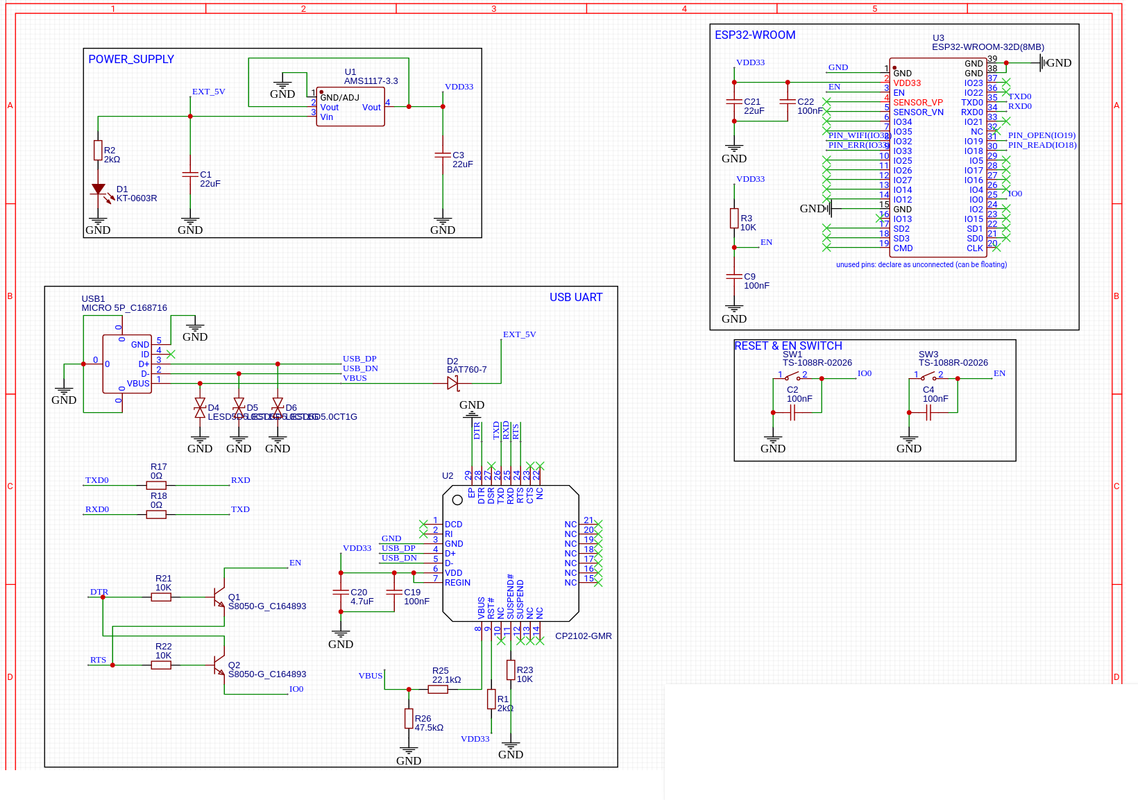I'm having a similar issue than the other folks. This is the circuit of my custom board:

- Circuit.png (100.71 KiB) Viewed 14331 times
And this is the Arduino IDE code to show the problem:
#define GENERIC_USE_LED 27
void setup() {
pinMode(GENERIC_USE_LED, OUTPUT);
digitalWrite(GENERIC_USE_LED, HIGH);
}
Whenever an external CH340 usb to serial interface is connected, everything works as expected.
When the external USB interface is not connected, the ESP32 does not boot (the white led does not lights up), and the ESP32 needs a reset to continue the boot.
Please note that the ESP32 is not pulling the power from the CH340. It merely needs it to be connected, even if the ESP32 is being powered on by another USB cable.
As it can be seen in the photos, the white led (lit when the boot happens) lights up even if the CH340 is not the primary power source:

- With CH340.jpg (60.48 KiB) Viewed 14331 times
When there is no USB interface connected through the flat cable, that is, there is nothing connected to the TX, RX, RTS and DTR in the circuit, the ESP32 halts the boot until the reset button is pressed:

- Without CH340.jpg (43.53 KiB) Viewed 14331 times
airmigjr wrote: ↑Sat Jan 07, 2023 3:59 pm
Hi folks,
Thank´s for all contribuition at this topic. Anyway I´m having the same issue here. I´ve develop a board, within the CH340 Serial Converter and the same transistors circuit. Everything runs fine, until after I compile and upload the binary to the ESP32. It´s almost the same circuit of our friend that had opened the topic. But, there is a bit difference between the behavior from my ESP32. Besides I have to click at the reset button, the ESP32 just start to work if it is connected with a serial monitor, that is, if I´m not with the Serial Monitor opened and listening (I´m using VSCODE with PlatformIO), the microcontroler does not start the normal behavior, running the code at void setup() and after, at void loop().
It just starts at the condition of being connected with a serial monitor activated on PlatformIO AND then, if I click the reset button. Even though, If I just click at the reset button using another power supply source, without the USB cable, the ESP32 doesn´t start to work.
Do you think this behavior happens by the same cause of the initial topic or could be another reason for this different process to make the ESP32 work?
And, please, after I read all the comments, I still do not understood what is the solution. Could someone help me?
Thanks a lot,
Airton
Hi, Airton!
Have you ever managed to find the solution for this? We're having very similar problems.
It would be great if anyone returned with an update.

